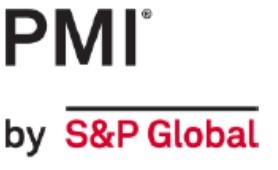Because of national holidays in various places, the manufacturing Purchasing Managers’ Index (PMI) data has been published over most of this week; as a result, the Global PMI compiled by J P Morgan using the data from S&P Global was not complete when it was released on Monday showing a further fall to 52.2. This is the lowest figure since August 2020 with the downturn led by China as tighter Covid restriction there held back output.
The UK saw an upturn in the PMI reading to 55.8, mainly as a result of a stronger output element compared to the 5-month low in March which led to a solid increase in employment. This improvement in production was mainly in the investment and intermediate goods sub-sectors. However, new orders growth slipped to its weakest for some time (but was still positive) with export orders continuing to be negative and higher prices also hitting demand. There was a reduction in delivery delays compared to the start of the year although, perversely, this has a negative impact on the overall index calculation.
The negatives are clearer to see in the Euro-zone PMI which although still firmly in expansion territory, fell back to 55.5, its lowest for 15 months (Jan-21) with the output element at a 22-month low of 50.7. Ironically, at the sub-sector level, the strongest PMI was for the investment goods industries, although output for this group actually fell slightly. There was a modest improvement in new orders overall but supply chain pressures remain significant in the context of Covid restrictions in China and the war in Ukraine.
There is a range of outcomes for the different countries in the Euro-zone with Netherlands and France seeing an improvement compared to the March reading; however, the most significant figures are for Germany where the PMI slipped to a 20-month low of 54.6 as both new orders and output were below the crucial 50 level.
In the rest of Europe outside of the Euro-zone, only Hungary recorded a higher PMI (58.9) than in March, although Czechia (54.4), Poland (52.4), Sweden (55.0) and Switzerland (62.5) were all still firmly in positive territory. Turkey, which was already seeing contraction last month, slipped slightly further to a reading of 49.2 and while there was an improvement in Russia, it is also still in contraction mode at 48.2.
There is a very mixed set of data for Asia; we have already hinted at China which moved further into negative territory at 46.0 which is its lowest level since the start of the pandemic in February 2020. Both Japan (53.5) and Taiwan (51.7) also saw their PMI reading slip back from the March figure but there was an improvement in the ASEAN region (52.8), India (54.7) and South Korea (52.1).
There is a similar mix of trends in the Americas where the already strong reading for the USA edged up further to 59.2 – its highest level since last September – led by an acceleration in output but also helped by a further lengthening of delivery times. This meant that it swapped places with Canada which saw a significant fall in its PMI although at 56.2 it is still a strong positive. The PMI reading for Brazil fell slightly to 51.8 and despite edging up to 49.3, Mexico is in negative territory for the 26th month in a row.
Overall among the 25 countries and two regions that we monitor, the strongest PMI reading in April was in Switzerland (62.5) with only 4 countries with a PMI reading below 50, the weakest of which was, significantly, China (46.0). The largest movements compared to the March reading were in Canada (down by 2.7 points to 56.2) and Russia (up by 4.1 points but still in contraction mode at 48.2).
The S&P Global (the new owners of IHS Markit) PMI reports are available on their web-site at https://www.markiteconomics.com/Public/Release/PressReleases and we also have a summary charts report which is available to download below. You should note however, that the PMI readings for Hungary, Sweden and Switzerland are not compiled by S&P Global but can be found with an appropriate internet search.

